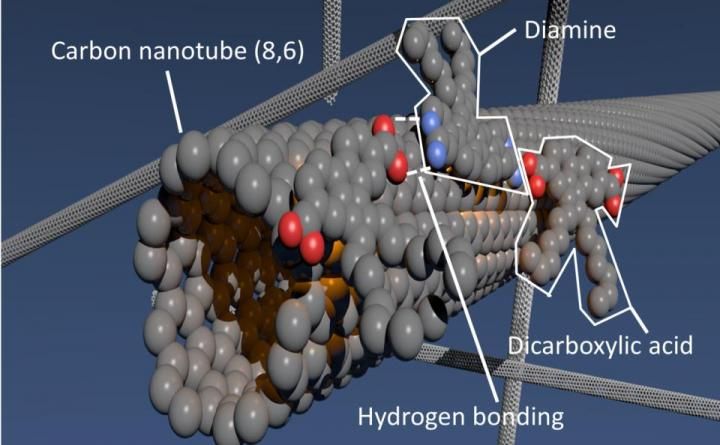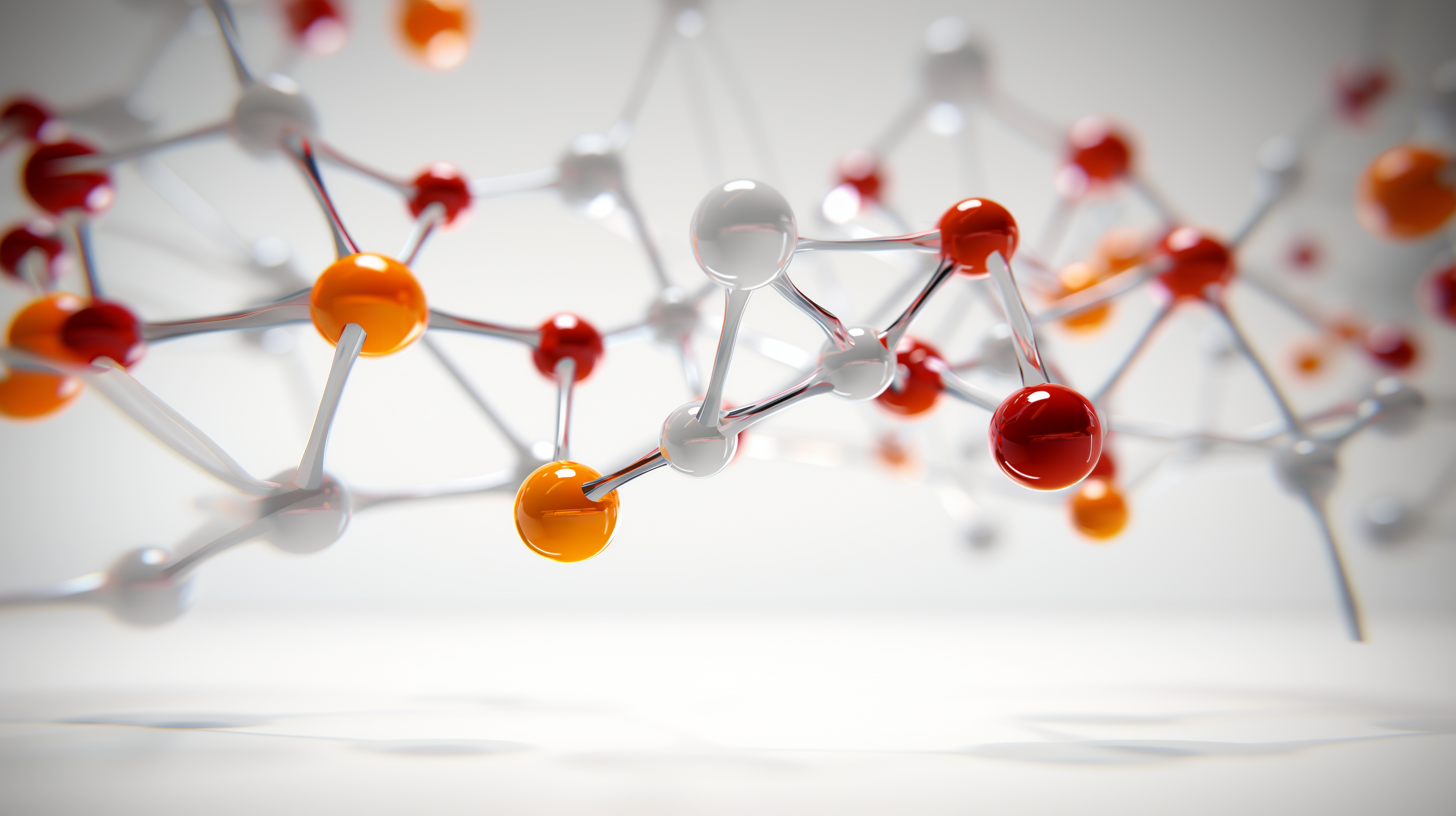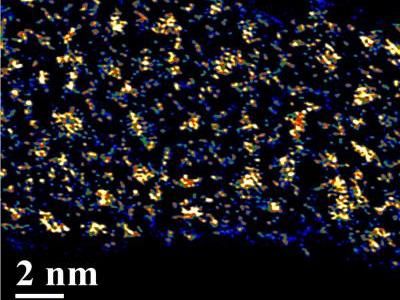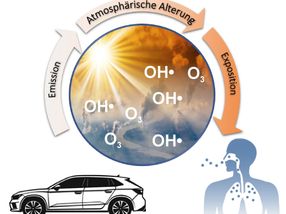New process enables easier isolation of carbon nanotubes
Manufacture of longer, thinner, and uncontaminated carbon nanotubes, and successfully isolating them, have been ongoing challenges for researchers. A newly developed method has opened up new possibilities in carbon nanotube development.

Hydrogen bonding allows a fluorene based polymer to grow on specific carbon nanotubes. This changes the solubility of the nanotube allowing it to be separated from other types of nanotubes.
International Institute for Carbon-Neutral Energy Research (I²CNER), Kyushu University
Researchers at Kyushu University's Department of Applied Chemistry have developed a method for obtaining high-quality single-walled carbon nanotubes. The relatively mild process uses an outer stimulus to yield undamaged carbon nanotubes that are purer and longer, and even gives researchers the ability to sort nanotubes according to their structure and length.
Previous approaches for isolating or sorting nanotubes have required use of more aggressive techniques. These can contaminate the nanotubes and are difficult to completely remove. They also involve processes that could damage the nanotubes and impair their functionality.
"Our approach involves introducing supramolecular hydrogen-bonding polymers, followed by simply shaking the mixture and changing the polarity of the solvent, rather than applying potentially destructive sonication or chemical modification," says coauthor Naotoshi Nakashima. "In this way, we can obtain single-walled carbon nanotubes over two microns long that do a fine job maintaining structural integrity."
The new technique is particularly useful because of the mildness and selectivity of the newly designed hydrogen-bonding polymers used. The presence of fluorene moieties within them enables the specific recognition of and binding to single-walled carbon nanotubes, and specific sorting of tubes with a small diameter. This is particularly beneficial because small-diameter nanotubes are exceedingly useful for optoelectronic devices, such as thin-film transistors and sensors.
"The nanotubes we can obtain using this method can be expected to have superior characteristics to those isolated by previous procedures," says coauthor Fumiyuki Toshimitsu (Visiting Assistant Professor). "For example, by limiting contamination, their electrical and mechanical properties can be optimized. And by being able to sort nanotubes by length or chirality, we can more precisely customize those used for a particular application."
Original publication
Other news from the department science
Most read news
More news from our other portals
See the theme worlds for related content
Topic world Synthesis
Chemical synthesis is at the heart of modern chemistry and enables the targeted production of molecules with specific properties. By combining starting materials in defined reaction conditions, chemists can create a wide range of compounds, from simple molecules to complex active ingredients.

Topic world Synthesis
Chemical synthesis is at the heart of modern chemistry and enables the targeted production of molecules with specific properties. By combining starting materials in defined reaction conditions, chemists can create a wide range of compounds, from simple molecules to complex active ingredients.




























































